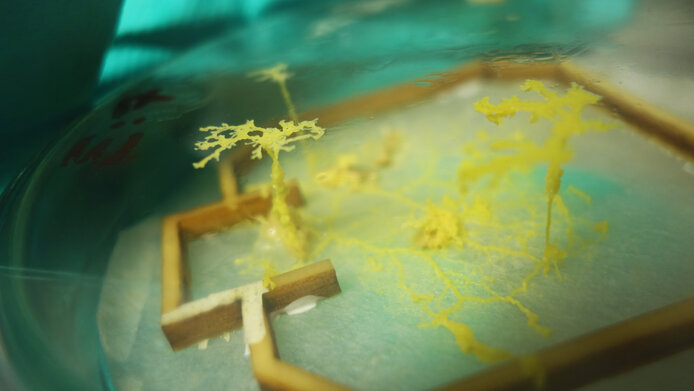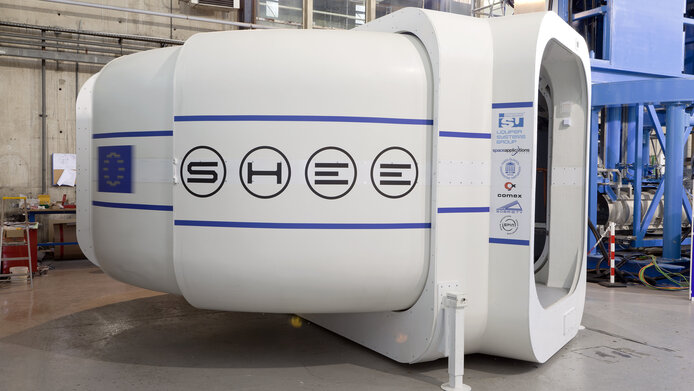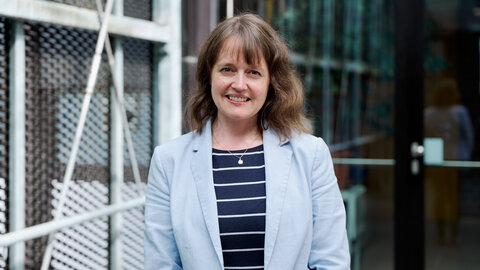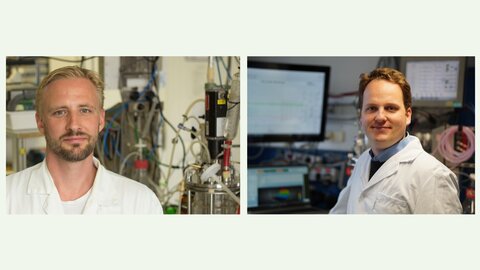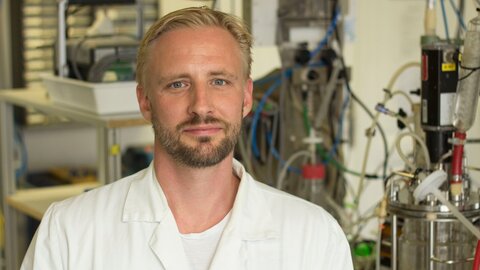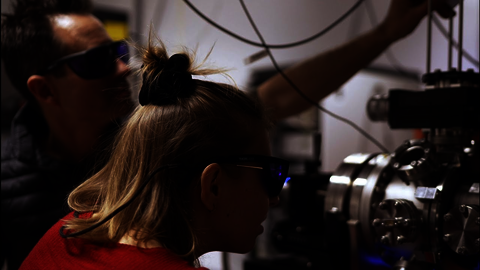Thinking across boundaries
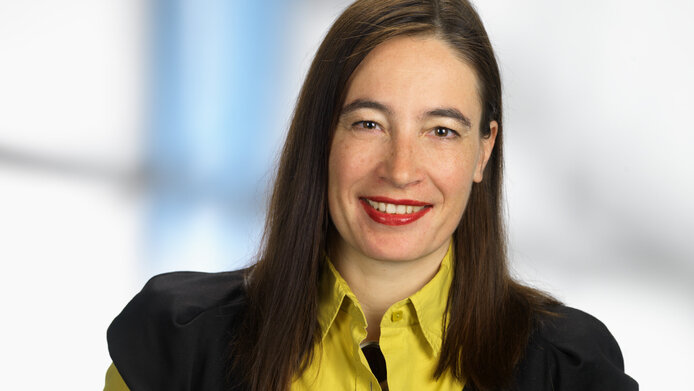
SHEE is an optimised minimal space, transformable and collapsible. The acronym stands for Self-deployable Habitat for Extreme Environments and describes the first European prototype of a space habitat which unrolls itself. While it was built for training purposes for missions to Mars and the Moon, the habitat can also be used on Earth as a research station, for instance in the Antarctic, or to house a high-tech medical unit for disaster relief. SHEE was officially launched early in December 2015.
Waste as a resource
This prototype was designed by Liquifer, an interdisciplinary platform of experts from the fields of architecture, design, human factors, system engineering, terramechanics, physics and satellite technology. “We work on highly complex issues of manned exploration”, explains Barbara Imhof, co-founder and managing director of Liquifer. “How multi-functional can a minimal space be designed? Is it transformable, collapsible?” to quote some of the examples she mentions. The crux is how to deal with available resources in closed systems, where these resources are always cycled within the system. “Waste is actually a resource and not something to get rid of, which is also true here, on the spaceship we call Earth”, notes the architect.
Project “Growing As Building”
The foundations for developments such as SHEE are laid by basic research, a case in point being the FWF-funded PEEK project Growing As Building (GrAB), which Imhof and her team will continue to pursue until early 2016. They are investigating growth principles in nature in order to translate them into architectural concepts and create living architecture. The three main fields of investigation in this project: principles of growth, material systems and closed-loop systems. Sometimes such projects give rise to technological applications such as 3D-printed objects. The project team around Imhof is very interdisciplinary, involving architecture, microbiology, art, bionics and robotics.
Slime moulds as co-designers
In order to examine the growth principles used by nature, Imhof’s team had to apply new scientific methods. For that purpose they installed a bio-lab at the project’s home site, the Vienna University of Applied Arts. In the lab, the researchers investigate slime mould, a single-cell organism which forms an optimised network from one food source to the next. To test this concept, the scientists used a vacant site on the British coast which had served as a defence post to face the Germans in the Second World War. The bridges linking the individual platforms had decayed in the course of time. The team built a scale model of this installation on site and placed food sources on it. The slime grew through the model from one oat flake to the next. The connections it grew served as the basis for an architectural concept. “The slime mould acted as our co-designer”, Imhof says with a smile.
Mycelia make construction material grow
In the context of material systems, Imhof is working on developing new construction material with the help of mycelia. These string-like fungus cells feed on cellulose contained, for instance, in wood chips or newspapers. In this way, one can use the mycelia to grow construction material exhibiting the properties of soft wood. It was important for Imhof to go beyond the simple shape of a brick. “With building-kit models we developed free-form structures that grew with mycelia and cellulosic material. The inner cellulose core served as template”, explains Imhof, who also wants to go one step beyond what is considered as “state of the art” in her work. The great idea behind this work is a house that can grow. “The houses we build right now become functional only once they are finished. Our vision is to develop houses that can already be used during the construction time”, notes Imhof.
Building cities from sand and sunlight
Imhof’s third main research interest are closed-loop systems. In this context, the research team experimented with algae. The algae convert carbon dioxide into oxygen and thus play an important role in a closed circuit in which natural materials are used for 3D printing. “One of our 3D printers operates with a lime-based material. When the batch is mixed, carbon dioxide is released which can be looped back into the circuit with the algae and converted into oxygen. These processes are essential for closed systems such as space habitats”, Imhof says in the interview with scilog. One part of the PEEK project involves the development of a 3D printer that can operate with material found locally. “For instance, instead of building Dubai out of glass and steel, one could 3D-print the city with locally available material such as sand and solar energy”, is how Imhof describes a vision of the future.
The connection between the environment and habits
Already as a teenager the 45-year old researcher knew that she wanted to study architecture. She recalls a key moment: at the age of 14 she was lying on the backseat of her parents’ Renault 4, watching the city move by from this upside-down perspective and thinking: “This is interesting. I’m going to be an architect!” She takes special interest in the structures of a city and the connection between habitual lifestyle and the built environment. “One thing influences the other. When you change your habits, you can also change the built environment, and vice versa”, maintains Imhof. She started her studies of architecture at the Vienna University of Technology (TU Wien) and continued in London at the Bartlett School of Architecture where she felt very much at home given her long-standing interest in the arts. After a term abroad at the Southern California Institute of Architecture in Los Angeles she finally returned to Vienna to study at the University of Applied Arts with Wolf Prix, who was to have a decisive influence on her professional life.
Outer space
Exceeding the boundaries of the imaginable, of what is conceivable – that was the credo of her teacher. “If you push the boundaries further and further, you end up with the question: how is it on the Moon or on Mars? What social systems are conceivable there? What sort of impact can architecture have on the way humans live together?”, is how she describes how she came to work on space architecture.
Space Studies
Hence, it was a logical step for Imhof to graduate with a Master of Space Studies at the International Space University in Strasbourg. Thinking back, the Viennese scientist says the most significant aspect during that time was internationality. In those two years she worked closely with 35 people from 30 different countries. “What has stayed with me from that time – apart from friends from all over the world – is that I went there with the conviction, from my European perspective, of being a tolerant person, and immediately hit the boundaries of my own tolerance”, Imhof remembers. These, too, were boundaries she had to cross. The Austrian space scene is small, and its members soon find themselves in an international context. Imhof’s work crosses boundaries in manifold ways.
Personal details
Barbara Imhof heads the FWF-funded PEEK project Growing As Building at the Vienna University of Applied Arts. She studied architecture at the Vienna University of Technology, at the London Bartlett School of Architecture and at the Vienna University of Applied Arts and is a graduate of Space Studies at the International Space University in Strasbourg. She is the co-founder and managing director of the Liquifer Systems Group, an international interdisciplinary platform dealing with the design and development of space missions.
